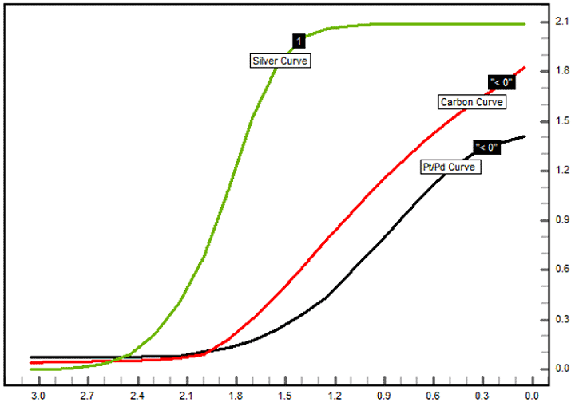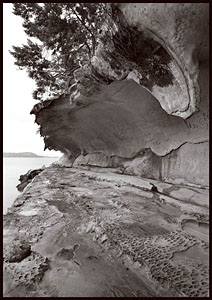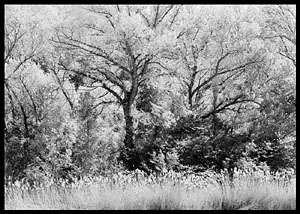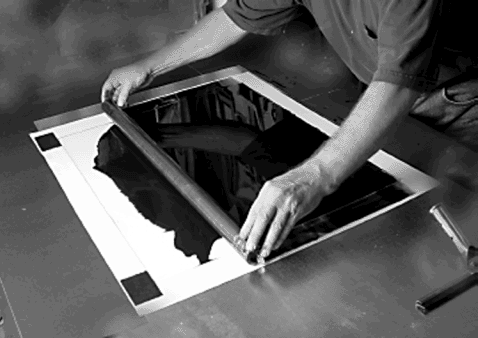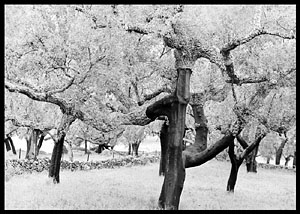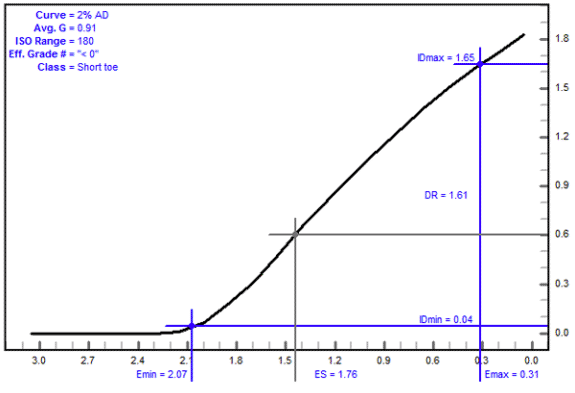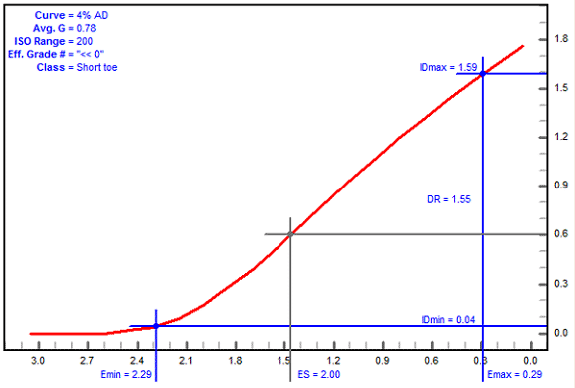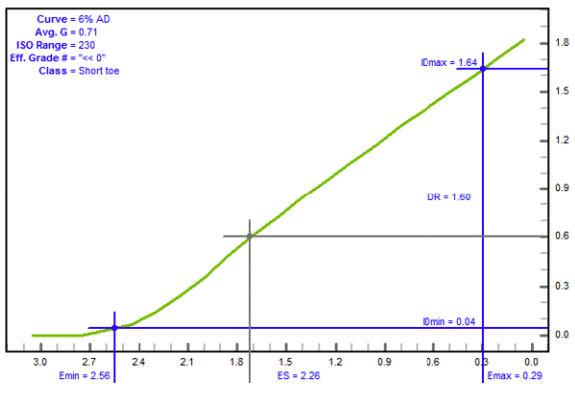 |
|||
|
|
|
The Carbon Transfer Process by Sandy King
The carbon transfer process is considered by most persons who know it to be one of the most beautiful of all photographic processes. Carbon prints are capable of a wide range of image characteristics, they can be virtually any color or tone, and the final image can be placed on a wide variety of surfaces, including glass, metal, paper, as well as various kinds of synthetic surfaces. When the final support has a smooth surface carbon prints have a highly unique quality, a discernible relief which gives them a real dimensional quality, especially prominent when the photograph is held sideways to the light. Carbon is without question the most distinctive and stable of all photographic processes, capable of presenting images with a wide range of characteristics, of virtually any color or tone, on a wide variety of surfaces. Finally, carbon transfer prints, which are made up of inert pigment(s) suspended in a hardened gelatin colloid, are the most stable of all photographic prints. Tonal reproduction is also one of the strong ponts of carbon printing. Carbon has a long tonal scale and excellent straight-line characteristics, qualities which allows the use of fully detailed negatives with long density ranges, resulting in an even and completely linear distribution of tones from the highest lights to the deepest shadows. Compare in the following family of curves a typical carbon curve with typical silver and Pt./Pd. curves.
The carbon curve has a very linear straight line curve, with little toe or shoulder, and Dmax of over 1.80; the Pt./Pd. curve has a curve with very long toe and shoulder and Dmax of just less than 1.50; and the silver curve has a short but very pronounced toe and shoulder with Dmax of over 2.0. The carbon process as practiced today has a long history of use, having been introduced in 1864 by the Englishman Joseph W. Swan. Swan used a paper support, coated on one side with a pigmented-gelatin solution, known as carbon tissue. After sensitization and exposure this tissue was transferred to a temporary support for development. When dry the resulting pigment image was transferred to its final paper support. Swan began marketing carbon materials in 1866, offering his ready-made tissue in three colors, black, sepia and purple-brown. Carbon was widely practiced in Europe and in the USA throughout the 19th century and well into the 20th. It was considered by many to be the aristocrat of all printing processes, and commercial carbon prints typically cost much more than those produced by any of the other process, including palladium and platinum. The market for carbon materials all but disappeared in the 1950s, although Hanfstaengl of Germany continued to produce small quantities of carbon tissue and transfer papers for monochrome and three-color work until around 1990. Ultrastable, a modern carbon color printing process based on the use of digital negatives and pin registration of the color reliefs, was introduced in the 1990s and enjoyed some popularity as a high-end color printing process, but as of several years ago materials for the process are no longer available. As of early 2007 the only monochrome carbon tissue available in the US is that manufactured by Bostick and Sullivan in Santa Fe, New Mexico. B&S produces the tissue in several colors, including Forest Green, Nut Brown and Renaissance Black. The tissue is supplied in sheets of 36”X60” at an approximate cost of just under $4.00 per square foot. The tissue is of good quality, with a smooth and uniform coating, and is completely free of bubbles and other surface imperfections. I strongly encourage anyone interested in experimenting with carbon printing to work first with the B&S carbon tissue before attempting to make your own. However, this article will focus on the home manufacture of carbon tissue and instructions for its use. If you use the B&S tissue be sure to follow the working directions provided by the manufacturer since they are in some ways different from the directions given here for use with home manufactured tissue.
There are two major variations of the monochrome carbon transfer process: single transfer and double transfer. In single transfer the sensitized and exposed tissue is developed directly on its final support. In double transfer the sensitized and exposed tissue is first developed on a temporary support (usually a plastic of the polyester or polyvinyl family), and after drying the image is transferred to a final paper support. The final support is usually paper but may also be glass, metal, or various kinds of synthetic paper supports. Depending on the final support one should expect some slight increase in density of a carbon print on dry-down, though it is nothing like what we expect with processes like kallitype, pt./pd. or vandyke. And, unlike a pt./pd. print, which loses much of its wet beauty when dry, carbon prints usually have a richer, more brillant look when dry than when wet. The major steps in making a carbon print are the following.
We will now describe each of these steps in detail. Carbon printing is a very flexible process and in every step there are multiple methods that work. However, in this article we must limit discussion to only one or two of the major variations. Consult the sources in the recommend bibliography for more detailed information on the process.
What You Will Need In order to make carbon prints you will need the following chemicals, materials and equipment. Most of the basic ingredients are readily available locally, and inexpensive, a fact that will be
much appreciated by those used to the high cost of processes requiring precious metals such as gold, palladium and platinum.
Equipment
Materials
Simplified Coating Procedure
Coating with Magnetic Frames An alternative to the free hand method of coating described above is the use is of magnetic sign material over a sheet of galvanized steel. With this method you first level a sheet of galvanized steel, squeegee the tissue support to the metal, and place a frame of flexible magnetic sheeting material over the support. The warm glop is poured over the paper, and then evened out either by hand or with a rod. The magnetic sheeting material serves as a dam and keeps the coating solution confined to the area of the frame. Magnetic sign material is available in a wide range of sizes up to approximately .060”. I use the .040 thick material for most of my own work. Assuming you fill up the frame completely with glop the .040” material will give a wet coating thickness of approximately 1.0mm. Prepare the sheeting material by cutting out a frame in the material slightly larger the tissue size you wish to make. You can also use strips of magnetic tape, cutting them to form a frame of the desired size and taping the sides together with duct tape. To coat, first place the galvanized steel plate on a flat surface and level it. Next, place the tissue base briefly in water and then squeegee it to the galvanized steel sheet. Place the magnetic mask over the paper. The magnetic material will stick to the steel through the thickness of the paper with enough force to keep the gelatin from flowing, keeping it entirely confined within the frame. Wipe off excess water with a clean towel. Pour the pigmented gelatin on the support and rapidly spread it with your hands as evenly as possible over the area of the frame. This can be done very quickly as there is no risk of the glop running out of the coating area as sometimes happens with the free hand method of coating.
It is also possible to even out the coating by rolling a steel tube or threaded rod, preheated to about 125°F, over the glop. First, pour the glop at one end of the frame and quickly spread it over about 2/3 of the surface to be coated. Then, roll the rod or tube, supported by the thickness of the magnetic sheeting material on each side, over the glop from one end of the frame to the other. This action will even out the coating over the base. The rod needs to be long enough to completely cover the cutout of the frame, and it must be rigid enough so that it does not sag in the middle. With practice one should be able to distribute the pigmented gelatin solution evenly with just one passage of the rod. The heat of the rod melts the gelatin as it passes over the glop and dissipates on contact any bubbles that may be on the surface of the pigmented gelatin solution. Done correctly, the surface of the tissue will be as smooth as glass after coating with this method. When the gelatin sets, run a sharp point such as a toothpick or sharp lead pencil around the edges of the mask, lift the tissue and transfer it to a drying screen.
To determine how much volume of glop is needed in to completely fill the frame and allow some excess, which is necessary with the rod, first convert all of your dimensions to centimeters, then multiply width X length X depth (thickness of the sheeting material). For example, for a tissue 11X14" in size you will need about 100ml of pigmented gelatin solution to achieve a wet coating height of .032". This assumes, of course, that the flexible magnetic sheeting being used for the frame has a thickness of .032”. For sheeting of other thickness just make the above calculations to determine how much coating solution should be used for a given area. Remember, the use of a rod requires that the amount of glop you pour into the frame be slightly in excess of the calculated amount...
Single Transfer Procedure—The final support for single transfer can be either a fixed-out photographic paper or a drawing or watercolor paper that has been sized with a hardened layer of gelatin. Any good quality paper may be used, depending on the final surface desired. I recommend that beginners use fixed out photographic paper for the final support during the learning phase as the sizing of art and drawing papers is a fairly complicated procedure and can lead to much frustration in use if the sizing is not done properly. Photographic papers are prepared by soaking in a hardening fixer for 5-10 minutes, then washing thoroughly in running water for 15-20 minutes. Drawing and watercolor papers must be sized with a coating of hardened gelatin. Follow the directions below.
When the gelatin sets, hang the paper to dry. For good results two or more coatings, with drying between each, is usually required.
Drawing and watercolor papers for double transfer may be prepared as for single transfer with one important difference: in place of formalin or glyoxal use potassium alum as the hardener. Mix two grams of potassium alum dissolved in 100ml of warm water, then add about 5ml of this solution to every 75-100 ml of coating solution. The gelatin of papers hardened with potassium alum will swell much more than that of papers hardened with formalin or glyoxal, thus allowing complete contact with the carbon image on the temporary plastic support.
Either ammonium or potassium dichromate can be used to sensitize the tissue. I use potassium dichromate for tray sensitizing and ammonium dichromate for spirit sensitizing. The contrast of a carbon image is controlled by matching the dichromate concentration of the sensitizer to the DR (density range) of the negatives: solutions high in dichromate are used for high contrast negatives, solutions low in dichromate for low contrast negatives. Depending on the native contrast of the tissue, and the DR of the negative, the useful strength may range from as low as 1/4% to as high as 4%-6%. The strength of the sensitizer is expressed as a percent solution, an expression of weight per volume (w/v), indicating how many grams of a chemical are to be dissolved in water to make a final volume of 100ml of solution. For example, to prepare a 3% potassium dichromate sensitizer dissolve 3 grams of potassium dichromate in 90 ml of water (or 30 grams in 900 ml of water, etc.), then top off to 100 ml or 1000 ml of total solution.
Carbon tissue can vary greatly in contrast so the exposure scales obtained above with the 2%, 4% and 6% sensitizers would apply only to the specific tissue used for the tests. In actual practice carbon tissue is sensitized in one of two ways: 1) by soaking the tissue in a tray containing the sensitizer, or; 2) by brushing a solution containing dichromate and a fast drying spirit such as alcohol or acetone directly on the tissue. Tray sensitized tissue takes up to 1-2 hours to dry, while spirit sensitized tissue will dry and be ready for printing within 15-30 minutes. Both methods are capable of giving excellent and repeatable results in monochrome work when used properly. I personally prefer spirit sensitizing because the sensitized tissue dries faster than with tray sensitizing and because it is very efficient in use of materials. As soon as the tissue is dry a phenomenon known as “dark effect” kicks into gear. Dark effect is caused by a slow insolubilization of the gelatin of sensitized, unexposed tissue. The practical consequence of the dark effect is a gradual gain in speed, accompanied by a loss of contrast. The effect is least in a cold, dry environment, and at a maximum in warm, humid conditions. For maximum consistency, maintain the working room at a constant relative humidity of around 50% and always time the exposure of the tissue to within 5-10 minutes of the end of the sensitizing stage. Tray Sensitizing of Carbon Tissue Carbon tissue should be sensitized under low-level tungsten illumination or with a yellow bug light. The sensitizing bath should be used at about 55-50°F. and the tissue should be left in the sensitizer for about three minutes. For consistent and repeatable work it is necessary to standardize this operation in terms of solution temperature and time of sensitizing so that the tissue always absorbs the same amount of sensitizer. If the tissue has dried out excessively it may be necessary to first place it in a tray of cool water for a minute or so and allow it to flatten out before sensitizing. Squeegee to eliminate excess water before transferring the tissue to the sensitizing bath. If the tissue has been stored flat this step can be eliminated. Place the tissue in the sensitizer and agitate gently for the duration of the three minute sensitizing period. After three minutes remove the tissue from the sensitizer, allow it to drain for a few seconds, then place it emulsion side down on a clean sheet of acrylic plastic. Squeegee out the sensitizer, remove the tissue from the plastic and hand dry (or dry on a drying screen. Dry the tissue in the dark, or in a room illuminated by a yellow bug light. The potassium dichromate sensitizer can be reused, but its printing properties change with time and it must either be periodically renewed or replenished.
Spirit Sensitizing Spirit sensitized tissue dries much faster than tray sensitized tissue and is also more environmentally friendly since only a very small amount of dichromate solution is needed. Ammonium dichromate is recommended for spirit sensitizing because it can be diluted with either alcohol or acetone and the stock solutions can be mixed at stronger dilutions. Potassium dichromate can also be used, but should only be diluted with acetone. To spirit sensitize a sheet of carbon tissue do the following. Prepare a dichromate stock solution of 3X the strength necessary. For example, if you need a final strength of 2% prepare a dichromate stock solution of 6%. Then, dilute 1 part of the stock solution of dichromate with 2 parts of the spirit, either acetone or alcohol. First, place several sheets of newspaper on a cork or foam board. Then, pin the tissue to the board to keep it from moving when brushing.
Brush the sensitizer on the tissue using a foam brush. Use a one-inch wide brush for 4X5” and 5X7” tissues, a two-inch wide brush for 8X10” tissue, and a three-inch wide brush for tissue 11X14” and larger. To coat, first wet the brush in clean water and shake out the excess. Then, pour the required amount of sensitizer directly on the tissue and brush it on: first, brush with parallel strokes on the long dimension; then repeat the process on the short dimension; and finally brush over on the diagonal.
Allow the tissue to surface dry and then brush on a second coating. To coat twice you will need approximately 8ml of total solution for an 8X10 tissue, using 4 ml for each coating. Adjust accordingly for other sizes. After the second coating place the tissue on a drying rack or hang to dry. Drying can be accelerated by directing the air from a fan on the tissue. Whether the tissue is sensitized in a tray oe with a spirit sensitizer it must be completely dry before it is placed in contact with a negative, otherwise the two could stick together, causing serious damage to the negative.
|
|||||||||||||||||||||||||||||||||||||||||||||||||||||||||||||||||||||||||||||||||||||||||||||||||
|
|
|
|
